10 Legendary Photographers to Inspire Your Work
Aug 27, 2021
One of the best ways to learn a craft is to study the work of others and learn from their example.
Photography is an art of observation as it is, and Lee Love, your Photo Mentor, was surprised when the Facebook group didn’t have any screaming examples of Mentor Photographers inspiring their pathway to learning about photography.
Luckily for you, this post introduces the eclectic and awe-inspiring collection of photographers Lee shares with you in a recent Friday LIVE.
You’ll instantly recognize a few widely-known names on Lee’s list of influences on his work. But in some cases, the images are what you’ll know and not the photographer’s name. Talk about an image telling a story!
For insights beyond this overview with quotes and examples, click below and take a peek at the video and hear what Lee further discloses:
A Discovery of You
One thing Lee mentions caught my keen attention in this study of photography through a look at his favs. Because, by examining both the works and techniques of other photographers, known and not, a discovery of you transpires. You may start to note it even as you go through this post.
You see, some images will inspire and delight you. Some you may not even like. Others bring out new ideas or revelations for how to do things in your photos. A particular style may even repel you. But hopefully, you’ll grab a few highlights of new or different ways to SEE things through your lens, so you are sure to tell a story by what you capture.
Eventually, as you study these samples and experiment with the things you shoot, why, and how, you recognize the type of photos, the tone, style, and techniques that draw you towards them and, in combination, create your uniqueness.
What you like and don’t like becomes part of your singular imprint. For instance, Lee talks about how dramatic looks and bold colors are part of his signature because of the example of fearlessly splashing bright and bold colors by one of the mentors he admires. On the reverse side, he mentions his love of contrast and tonality in black and white photography, again due to other mentors’ influences.
A Look Back in Time
One of the things I like best about Lee’s selections for this study is the look back in time to photographers who are part of photographic history, and many of the photos are nostalgically relevant. Much of the work remains timeless documentation of the periods, people, and places these photographers shot.
Events retold through photos and videos evoke deeper understanding and emotional appeal more than mere words can muster to recount. (As a scribe, we do our best, but sometimes a picture is worth a thousand words, just as the saying goes.)

Margaret Bourke-White Getting the Shot in NY
Lee encourages you to lose your excuses and get off your butt when he talks about an early and accomplished female photographer, Margaret Bourke-White - 1904 - 1971 because of her tireless work to establish herself as a professional photographer against the odds.
As a pioneering photojournalist, Margaret’s insightful pictures of 1930s Russia, German industry, and the impact of the Depression solidified her reputation. Also noteworthy is her photojournalistic documentation of the drought in the American midwest.
Further, Margaret surprisingly took some of the first photographs inside German concentration camps at Erla and Buchenwald following World War II. And she also captured the last pictures of Mahatma Gandhi in India. WoW.

Margaret Bourke-White for LIFE Magazine
Photo History
Margaret was a graduate of Cornell University in 1927 with a degree in biology but dedicated her time and passion to become a serious photographer.
Margaret Bourke-White opened her first studio in her apartment in Cleveland, Ohio. With photographs of architecture and industry, she earned commissions. She caught the eye of Henry Luce, founder of Time and Fortune magazines. And, in 1929, he invited her to become Fortune’s first staff photographer.
Returning to New York in 1930, Margaret opens a photographic studio in the Chrysler Building. And then, when Luce launched Life Magazine in 1936, she became part of the new staff.
Margaret Bourke-White’s picture Fort Peck Dam, Montana, appeared on the first cover of Life Magazine, cementing her place in photographic history.
"If you want to photograph a man spinning, give some thought to why he spins. Understanding for a photographer is as important as the equipment he uses." ~Margaret Bourke-White
The Range Between Black & White
Ansel Adams - 1902 - 1984 is arguably the greatest landscape photographer of all time. Ansel is likely best known for his black and white images celebrating the natural majesty of the United States’ Yosemite National Park.
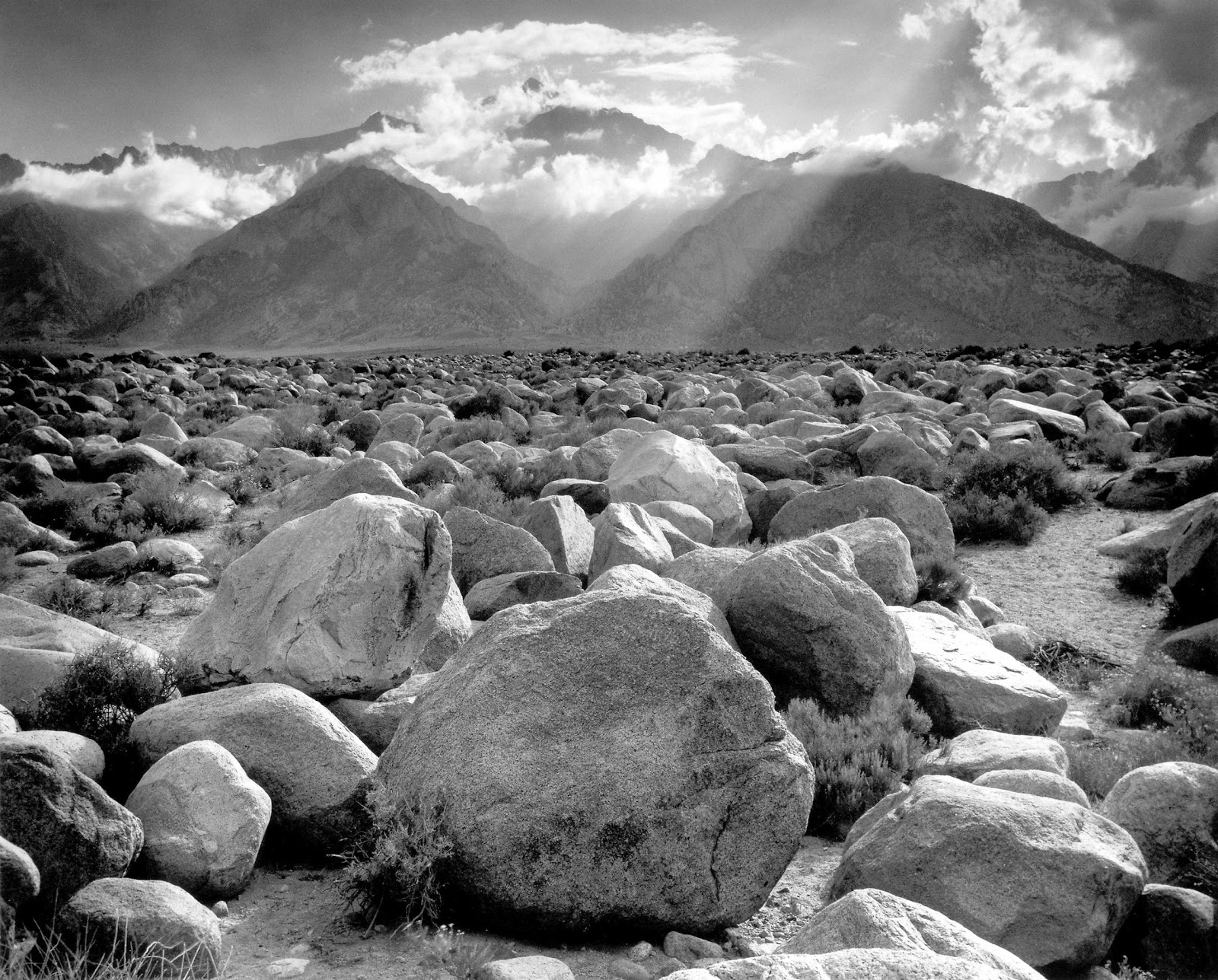
Ansel Adams, Landscape Photographer
Ansel Adams rejected painterly styles to create what he called “an austere and blazing poetry of the real.” And it seems in his eyes, black and white was the best depiction, leading him to study exposure. As such, Ansel’s the co-originator of the Zone System, a measure for accurately calculating exposure levels.
I love this quote and reminder from him:
“There are always two people in every picture: the photographer and the viewer.” ~Ansel Adams
Ansel’s quote aligns beautifully with the SEE Like an Artist concept Lee embraces and teaches, emphasizing the camera operator’s impact over the camera itself. What you bring to your photos makes your work as unique as you are.
Lee’s friend and well-loved, talented landscape photographer, Frank Lee Ruggles, was Chasing Ansel at the time of his untimely death, working on a fascinating 79 Year Project to recreate Ansel’s famous work for the National Parks Association. Because Frank loved Ansel’s work in black and white so much, Lee often teased him, saying, “Hey Frank, have you heard of this new thing called ‘color’ in photography?”
Frank’s story proves the ongoing interest in Ansel, and his work continues as the National Parks backing this project further suggests the value and importance of Ansel’s contributions.
The Emergence of Color
A pioneer of color in photography, Pete Turner - 1934 - 2017, began his career during the infancy of color photography. At the time, color was almost exclusively used for commercial purposes. However, unlike many of his contemporaries, Pete Turner embraced color, seizing opportunities, thus allowing him to master the process.
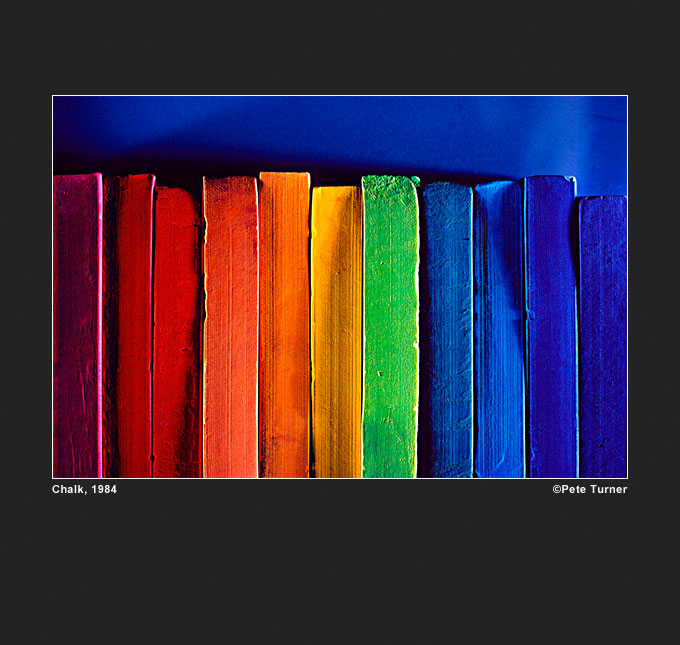
He was then able to create the imagery he felt compelled to make.
With Pete’s lack of concern for the labels of “art” or “commercial,” he deftly created a life’s body of work by blurring these boundaries.
I can’t help but feel there’s a lesson in Pete’s story to encourage photo artists to embrace change and push forward as early adopters, experimenters, and explorers. The intrigue in artistic endeavors is to create something unusual or new, right?

He too suggests the influence of the photographer and his worldview as a powerful impact on his photography, with a tiny nod hidden within to the power of personal observation.
Enter Artistry
“Start with a style and you are in chains, start with an idea and you are free.” ~Richard Avedon
Beyond color or time or place, the contribution of Richard Avedon - 1923 - 2004 centers around artistic adventures in photography. Whether or not you recognize his name, you’re probably familiar with some of his renowned photos.
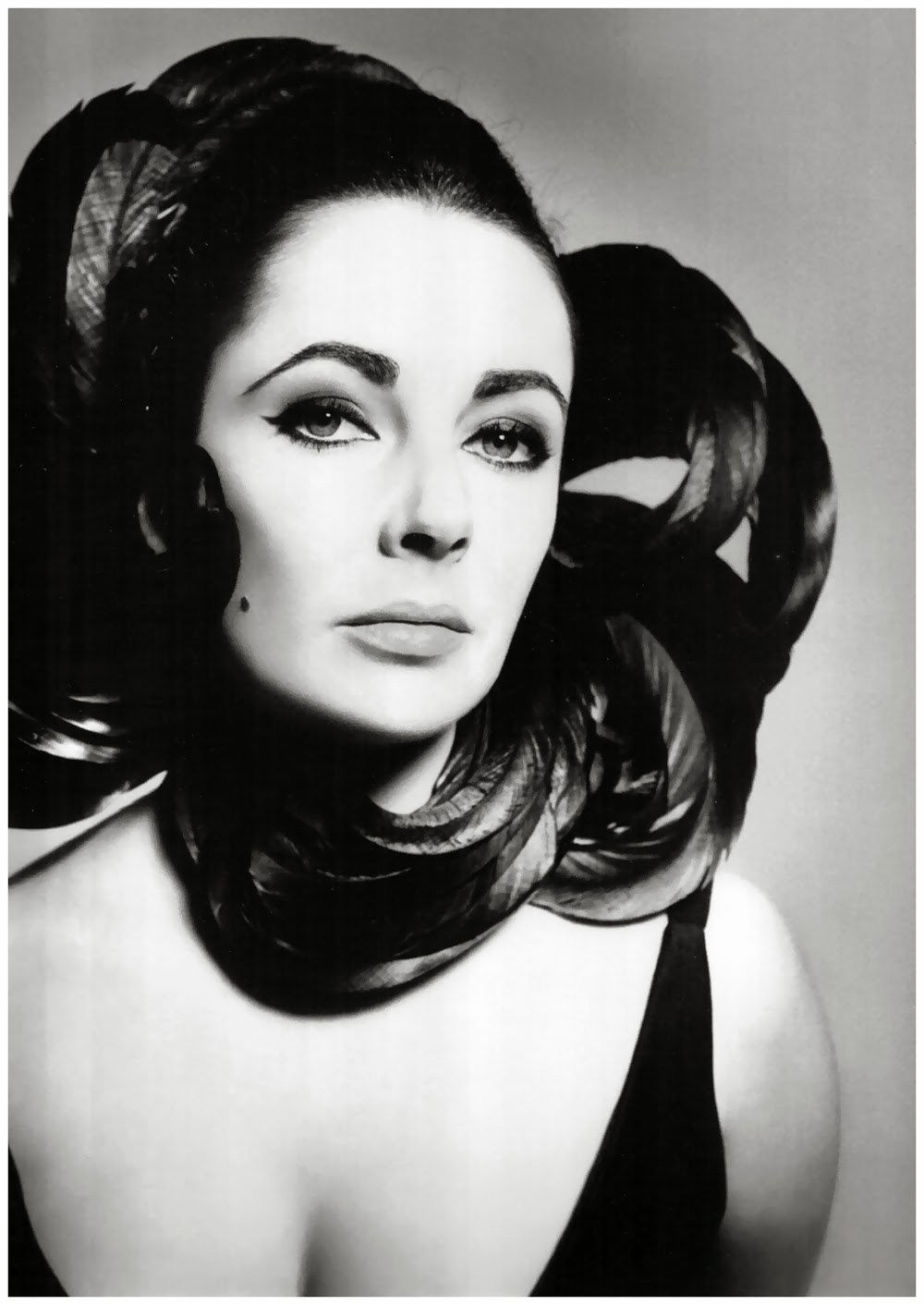
Elizabeth Taylor, 1964, shot by Richard Avedon
After ascending to lead photographer at Vogue, he shot most of the covers for the magazine from 1973 until late 1988. Richard’s well-known pool of work featuring Brook Shields began in 1974 and first was for a toothpaste ad. What?
He also photographed the infamous Calvin Klein Jeans campaign featuring a fifteen-year-old Brooke and directed the accompanying television commercials. Richard continued for years to photograph Brooke for Versace, 12 American Vogue covers, and Revlon's Most Unforgettable Women campaign.

On working with him, Brooke Shields told Interview Magazine in May 1992, "When Dick walks into the room, a lot of people are intimidated. But when he works, he's so acutely creative, so sensitive. And he doesn't like it if anyone else is around or speaking. There is a mutual vulnerability and a moment of fusion when he clicks the shutter. You either get it, or you don't.”
What I love about her take is the phrase “moment of fusion,” reflecting her understanding of the photographer’s immersive position in the photo, yet outside of the frame.
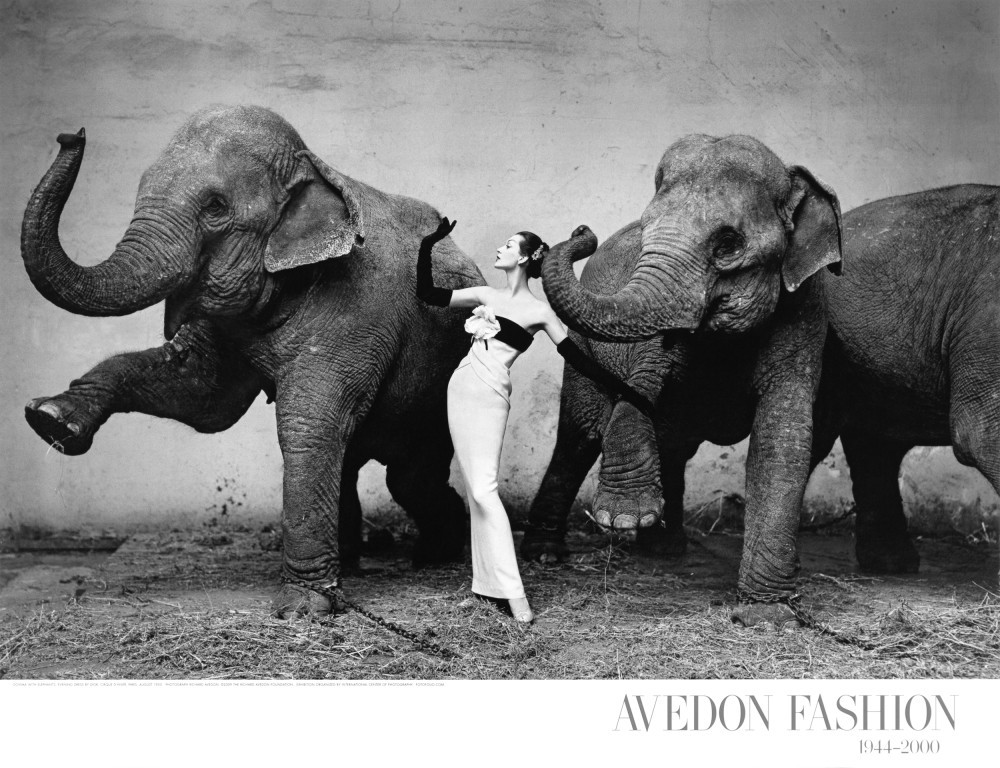
Beyond fashion photography, Richard Avedon’s portfolio is a beautiful mishmash of politics, entertainment, and culture. He’s photographed just a few you may know of, like Andy Warhol, the Everly Brothers, Fabian, Marilyn Monroe, Billy Graham, Allen Ginsberg, President Eisenhower, Adlai Stevenson, George Wallace, and The Beatles, to name a few.
Wow, what a career!
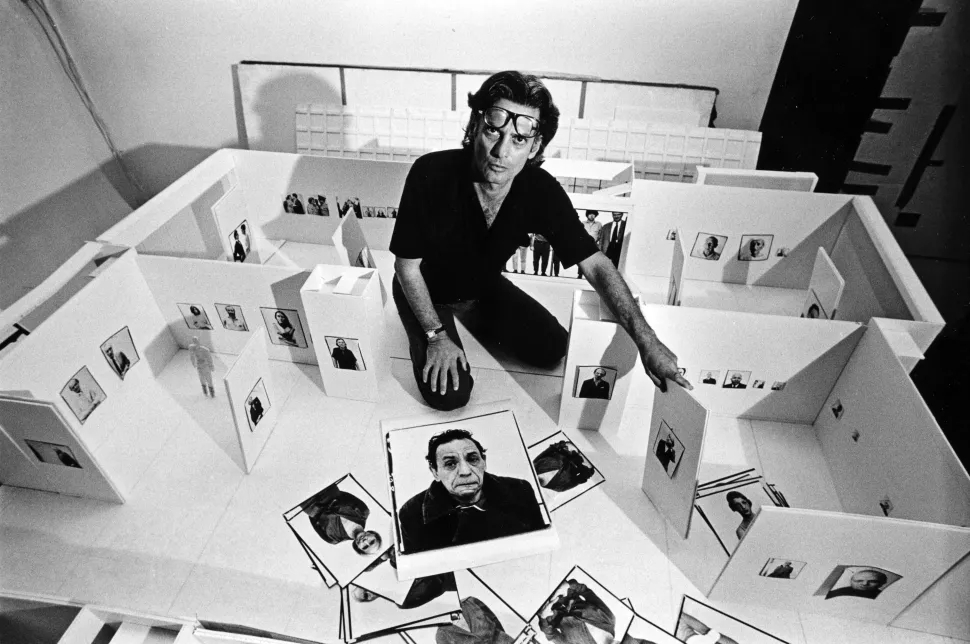
Richard Avedon, Artistic Adventures in Photography
Portraying People
Portraiture is one of Lee’s favorite types of photography because he finds people and their stories so intriguing. But a successful portrait is so much more than a headshot.
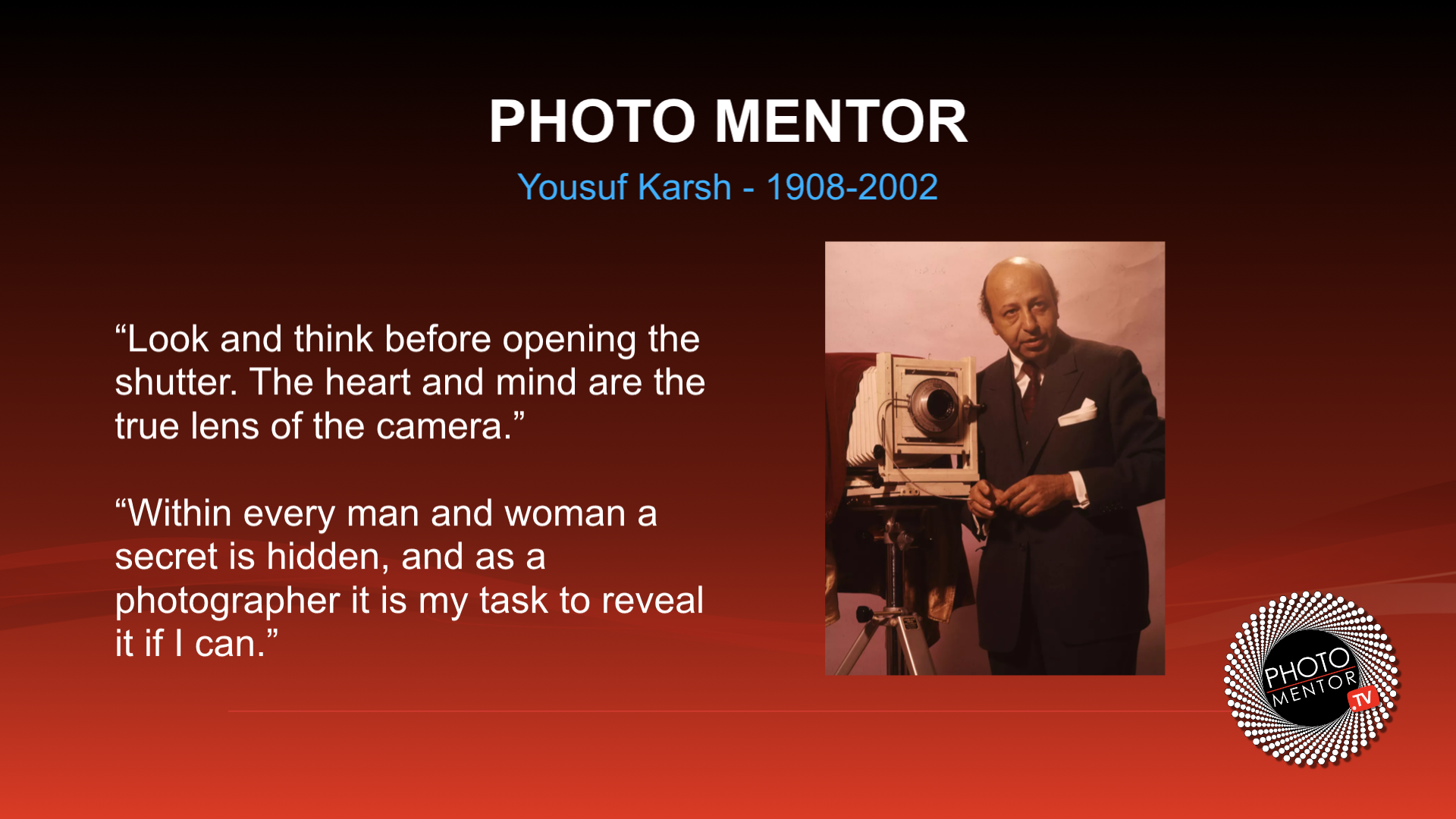
Introducing Yousuf Karsh - 1908 - 2002, an Armenian-Canadian photographer known for his portraits of notable people. Described as one of the greatest portrait photographers of the 20th century, his iconic 1941 photograph of Winston Churchill was a breakthrough point in an exceptional sixty-year career.

Winston Churchill by Yousuf Karsh
Yousuf Karsh’s rich collection of photography represents important historical documentation of significant personalities across the world and over time.
Numerous and noteworthy portraits taken by Yousuf include well-known political figures and well-known persons in arts and sciences. Over 20 photos of his work graced the cover of LIFE Magazine.
He wrote this of his experiences, “My life had been enriched by meeting many remarkable personalities on this photographic odyssey… to record those men and women who leave their mark on our era.”

Ernest Hemingway by Yousuf Karsh
From the Pope to Jacques Cousteau to Judy Garland, Yousuf even shot Ansel Adam’s portrait among the more than 15,000 sittings he photographed, producing over 370,000 negatives. Mother Teresa, Dizzy Gillespie, Alfred Hitchcock, Albert Einstein, Pablo Picasso, and John Steinbeck are among his eclectic mix of portrait credits.
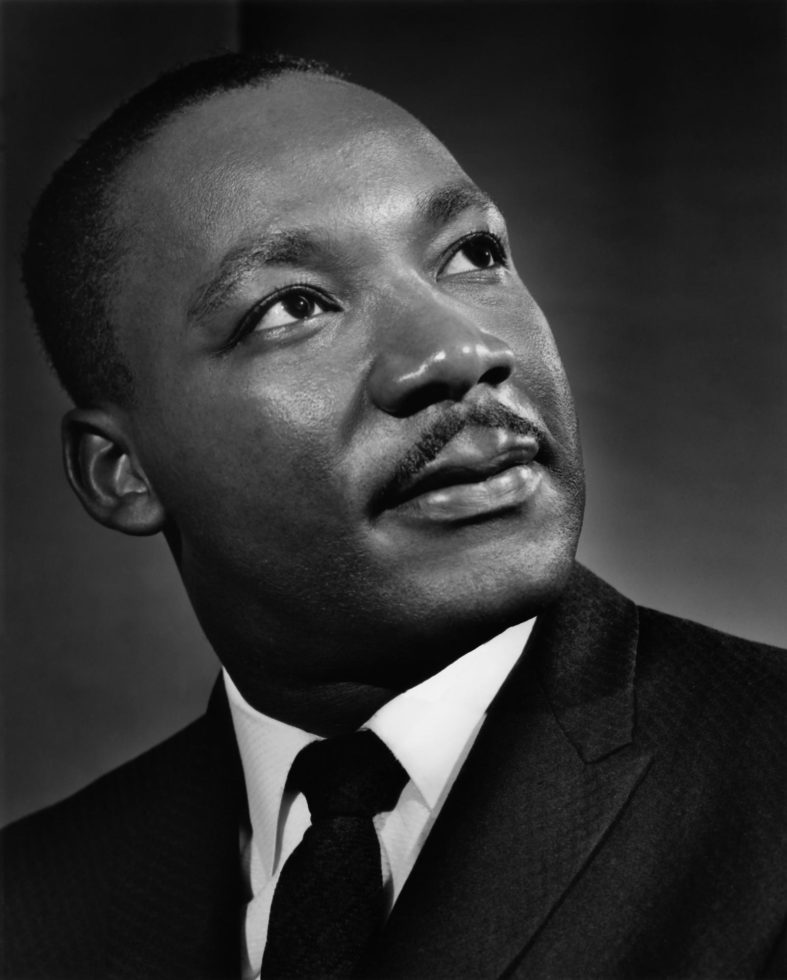
Martin Luther King by Yousuf Karsh
In his work, Yousuf strove to offer an intimate and humanizing look to deliver his amazing range of subjects to the viewer. More than one hundred portraits taken by Yousuf were gifted to the Smithsonian National Portrait Gallery, representing "the museum’s first exhibition devoted entirely to the work of this internationally recognized portrait photographer."
Glamour Shots
Creating the standard for the idealized Hollywood glamour portrait, George Hurrell - 1904 - 1992 is credited with developing the glamour idiom in photography.
Initially a painter, George first used photography simply as a medium for recording his paintings. But, moving from Chicago to Laguna Beach in California in 1925 became an opportunity to mix, mingle, and meet other painters and their connections, including photographer Edward Steichen, who encouraged George after seeing some of his work.

It turns out photography was better pay for George Hurrell, and so began his catapult to being considered “the definitive photographer of Hollywood stars.” In 1930, he became the official portrait photographer for MGM Studios and worked for Warner, Disney, and others in his long string of photographing a multitude of Hollywood stars.
George’s long visual arts journey took him into film and videography and even advertising photography, film production, and spotlight campaigns for magazines or features. Interestingly, he’s credited for inventing the boom light and developing other innovative lighting and darkroom techniques.

Ann Sheridan by George Hurrell
George’s career filled with studios, stars, travel, and glamour sounds like a fascinating film with a close-up view of the people and workings in this roaring time in history. This guy was a part of an exciting period of industry evolution in cinema, from movies to television to commercial projects.
And still today, many Hollywood photographers refer to their work as shooting in the ˜Hurrell Style™.”
The Shots to Rock History
This is what the London Times wrote about the next famous photographer Lee showcases in his presentation of photo mentors:
“Whether it was Jimi Hendrix setting fire to his guitar, Johnny Cash performing for hardened criminals at San Quentin State Prison, the Beatles leaving the stage after their final concert or the Rolling Stones at their most hedonistic, the photography of Jim Marshall helped to define the golden years of rock music.” ~London Times
Photographing rock stars and iconic musicians willy nilly as they worked and also completely at ease and outside of performances makes American photographer Jim Marshall - 1936 - 2010 and his work a documentary of musical history.
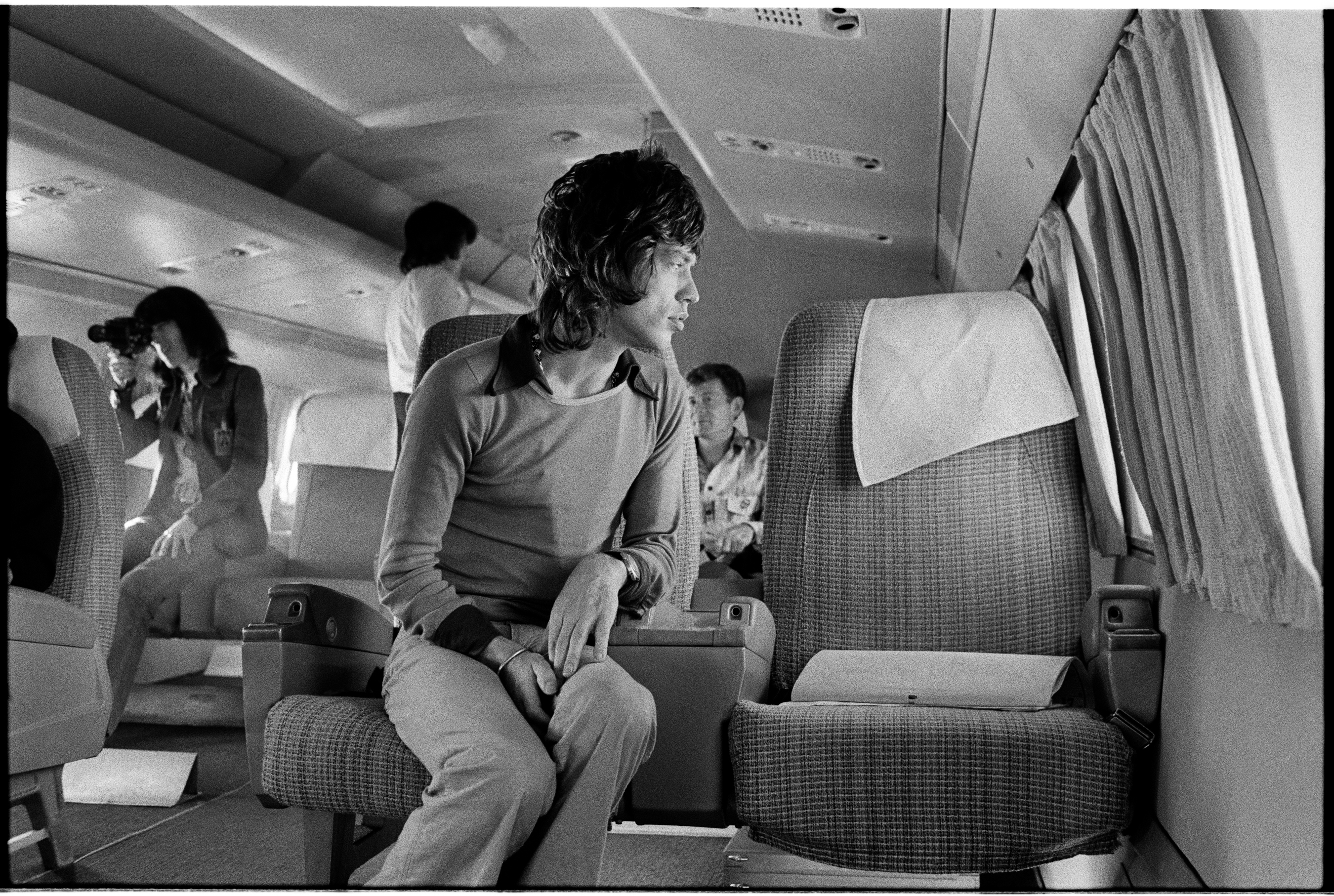
Mick Jagger by Jim Marshall
As he built trust with the musical arts and rock community, the access afforded him likely grew, especially as both Atlantic Records and Columbia Records hired him to photograph their musical artists. His photos powered the memorable covers on over 500 record albums, and even more were published in Rolling Stone.
What a whirlwind and wild tour Jim Marshall must have lived in chase of rockNrollers and other musical legends in his tireless documentation of a period, a movement, and a feeling while covering the shenanigans of 60’s and 70’s musicians.

One of Many Cool Photos of Jimi Hendrix by Jim Marshall
But Jim Marshall readily acknowledges that photography in his life was much more than a job, stating in part, “... uh—this has been my life doin' pictures and it's never just been a job; it's been my life.”
Amassing a collection of more than one million black-and-white and color negatives—which he referred to as his “children”—proves Jim’s passion for the life his photography took on, capturing a treasure of intimate and personal moments of real people. But also by portraying a culture.
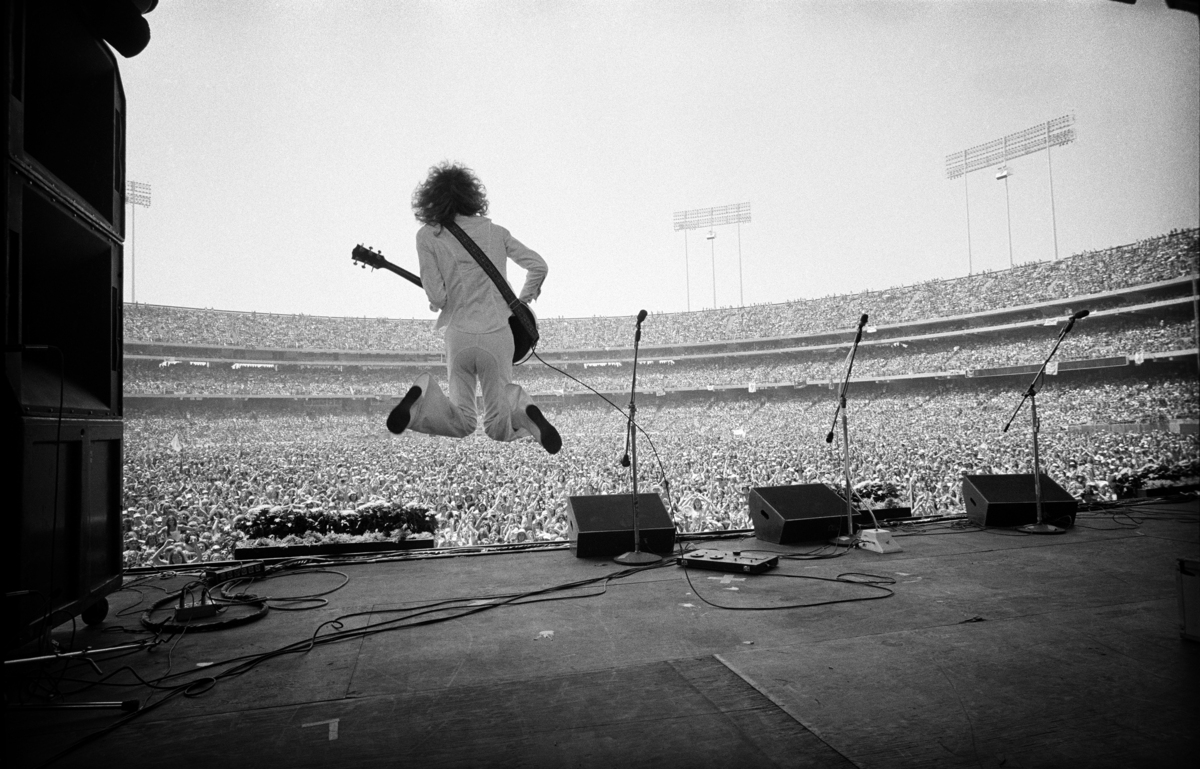
Peter Frampton A DAY ON THE GREEN
OAKLAND COLISEUM, 1975, by Jim Marshall
Framing Ideas
Speaking of a photographer who embodies the essence of capturing a culture, and over many years and in many formats, our next artist likely needs the least introduction.
A polaroid photo of John Lennon and Yoko Ono, taken five hours before Lennon's murder, is one of Rolling Stone's most famous magazine covers. And, Annie Leibovitz - 1949, our next study, took this momentous shot. But there’s a lot more to Annie than a single famous polaroid.

In addition to the distinction of being the first woman (1991) ever to have a solo exhibition at the National Portrait Gallery in Washington, D.C., Annie Leibovitz’s iconic photographs are held in the collections of the Art Institute of Chicago, Museum of Modern Art in New York, Los Angeles County Museum of Art, and others.
Annie’s rise to stardom, starting with becoming chief photographer of Rolling Stone at 23, kicked off her career with the chance to shoot rock stars and politicians. She’s credited with 143 coveted covers while there.
Further, Annie shot covers for Vanity Fair, Vogue, and many others as she became known as the photographer to the stars. And I mean a LOT of stars, and celebrities too, including athletes, dancers, and writers, for example.
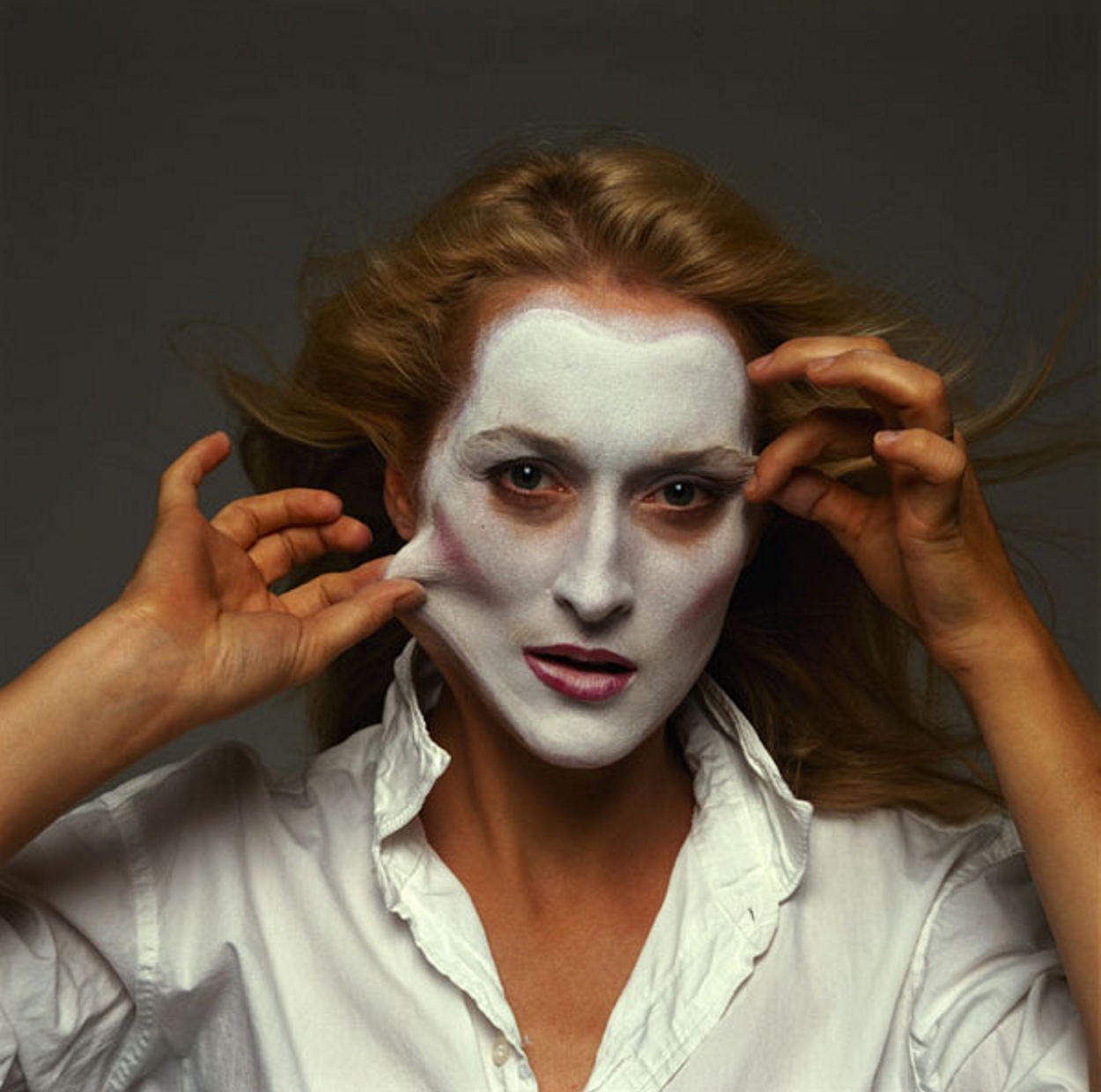
Meryl Streep by Annie Leibovitz
It’s reported she considers herself a “visual artist.” So, the setting and styling, mood and tone, and viewpoint Annie creates tantalizes the eye and exerts the brain with story, character, color palettes, and sometimes with whimsical fantastical designs, part of her signature and artistic sense.
The thing is, Annie’s work stretches the genres, evolves over her career, and flexes with the collaborations she accomplishes with subjects and clients, relationships, and play.
“I always ask a subject if they have ideas.” ~Annie Leibovitz
Her works in photography are often referred to as storybook, narrative-driven, painting-like, setup portraiture, composite imaging, and intimate.
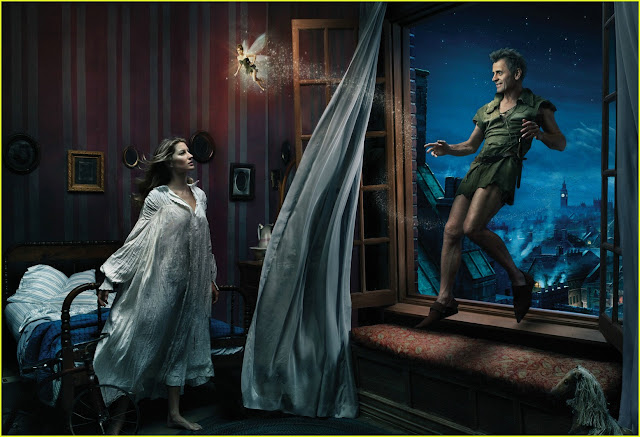
Shooting for Disney Films by Annie Liebovitz
Annie Surprises
A photojournalist and artist, there’s no doubt Annie’s place in photographic history is already understood and appreciated. Her well-known covers, awe-inspiring ad campaign projects, and revealing images of public figures speak clearly of her talent and successes. She has enough awards, honors, and recognitions to fill a book.
But, there are a few things that struck me as surprising and certainly unexpected in learning about and researching Annie Leibovitz and her work.
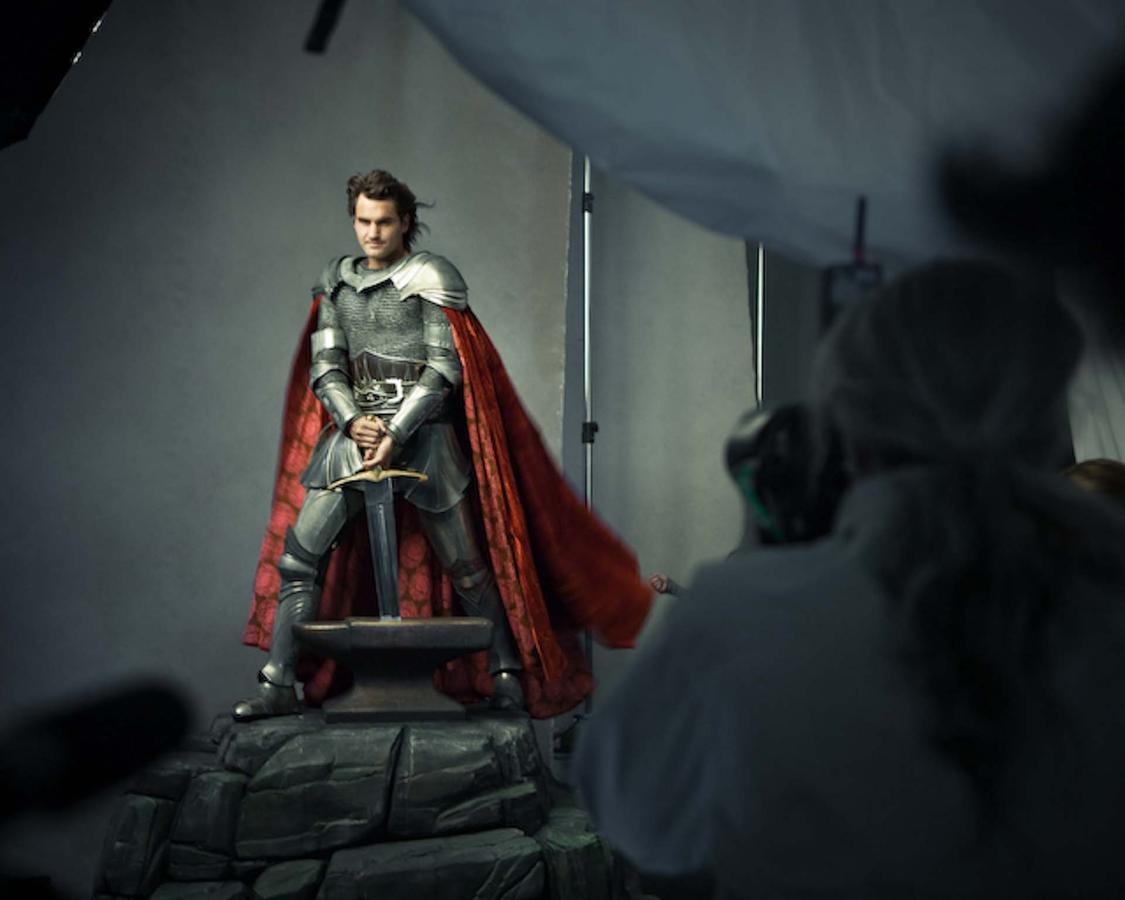
First of all, she’s totally NOT hung up on a camera or certain equipment, instead looking at the camera, any camera, as a mere tool for creating her art. She’s completely aligned with what Lee’s been teaching when it comes to recognizing the abilities of today’s technology and changes in the camera industry to help and not hinder your ability to shot with a perspective and story in mind. And, on top of mind.
She’s not afraid to shoot with digital cameras and in some ways prefers them. Also, she admits her love and generous use of PhotoShop to enhance and edit images, as desired.
One of the traits of her process I respect and appreciate is the importance Annie places on getting to know her subjects, taking time to research, and then plan according to what she discovers on an individual basis. It seems she’s very thorough about this step and attributes it to the success of many of her shoots. I think this directly reflects that relationship with clients thing Lee is always bringing up! The lesson is that it absolutely matters to the outcome of your work.
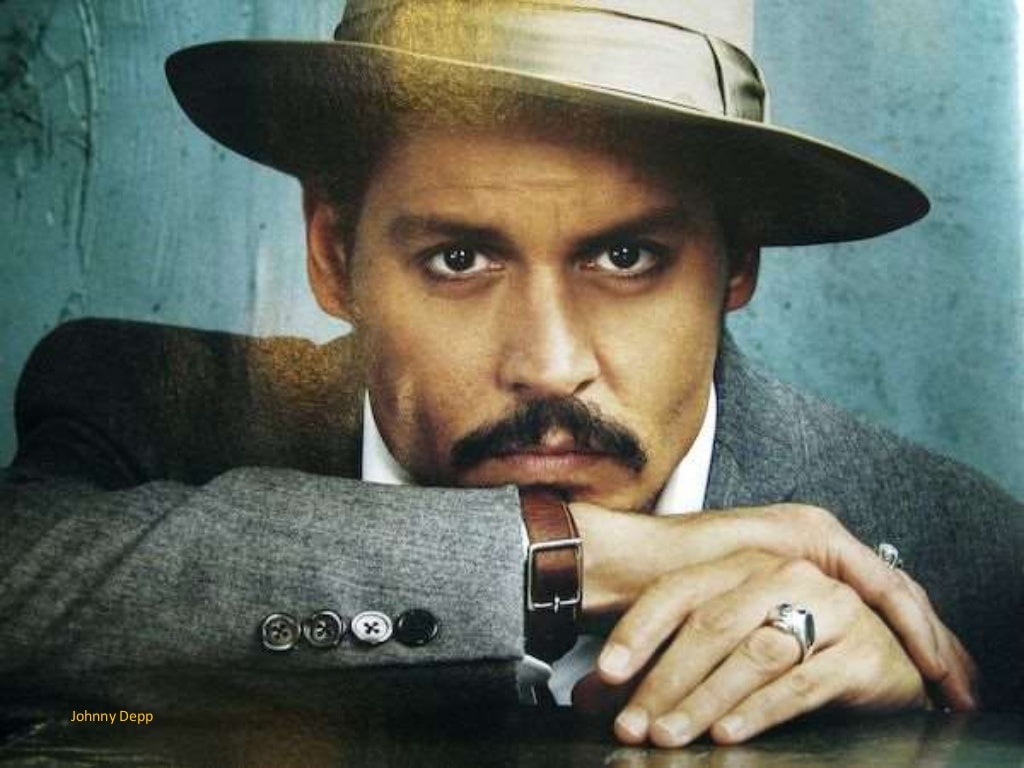
Johnny Depp by Annie Leibovitz
Finally, I love the emphasis Annie places on creativity, imagination, and fearless experimentation to uncover, discover, and explore new and exciting possibilities in artistry with people, subject matter, and photography.
Not Your Father’s Photography
Lee’s next selection for study, Tim Tadder - 1972, is an internationally acclaimed and noted photographic artist, perhaps known best for his highly inventive conceptual advertising photography.

Sometimes startling, Tim’s perspective is bold and original and pulls you in for further inspection, and introspection, too.
He’s ranked in the top 200 photographers worldwide by the prestigious Luezer Archive Magazine for 8 years running.

Bicyclist by Tim Tadder
His editorial-themed collections beg you to notice, to think, and to question. His advertorials invite you along and welcome you with enticing style and color for brave visual messaging.
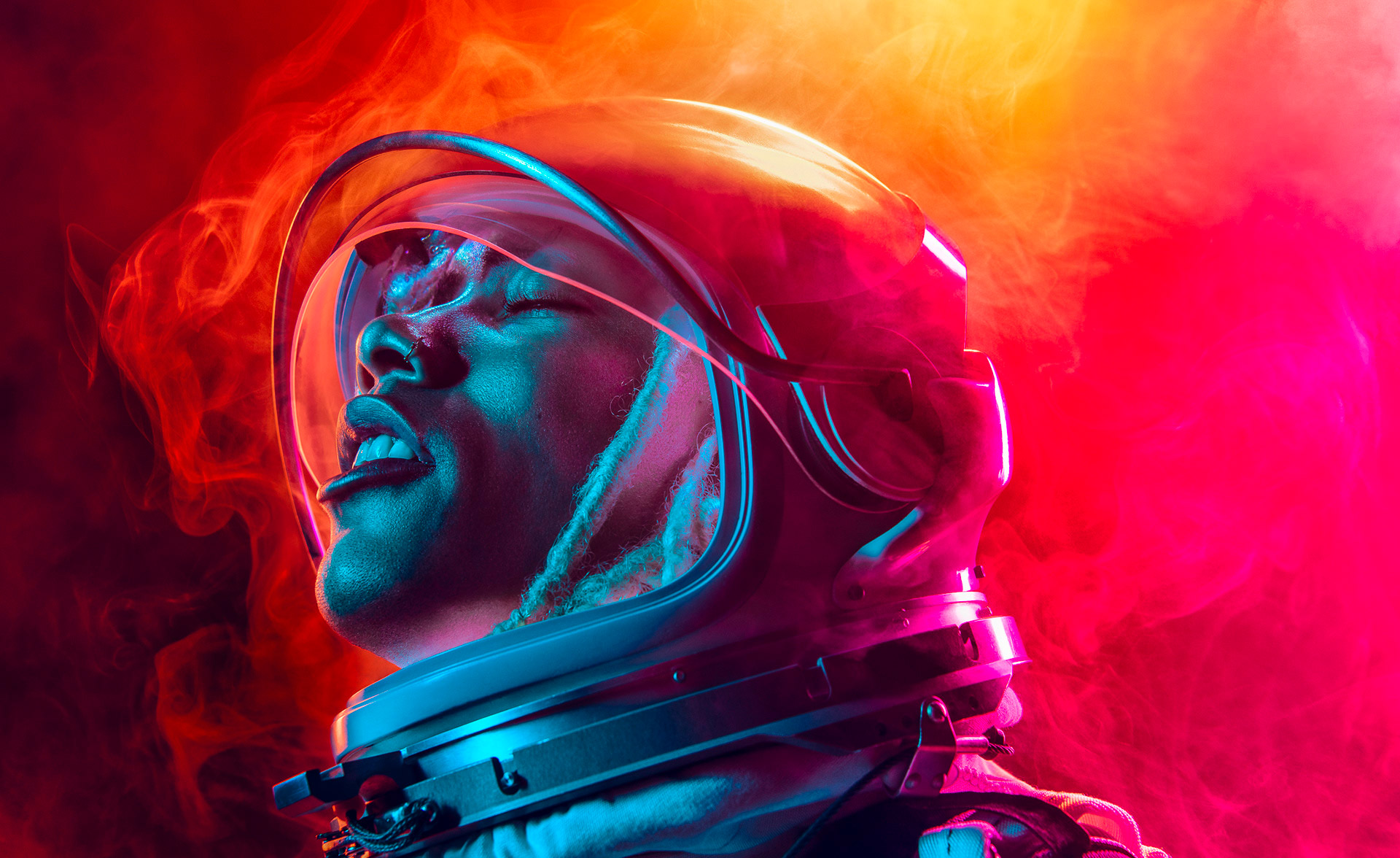
Astronaut by Tim Tadder
Tim’s playing in the big leagues with brands like Nike, but at first glance, his work exemplifies why. Stark, sharp, colorful, and impactful are drivers of his creations.
His portrait work is intense with power and emotion and includes a gambit of personalities and athletes highlighting color and detail spectacularly.
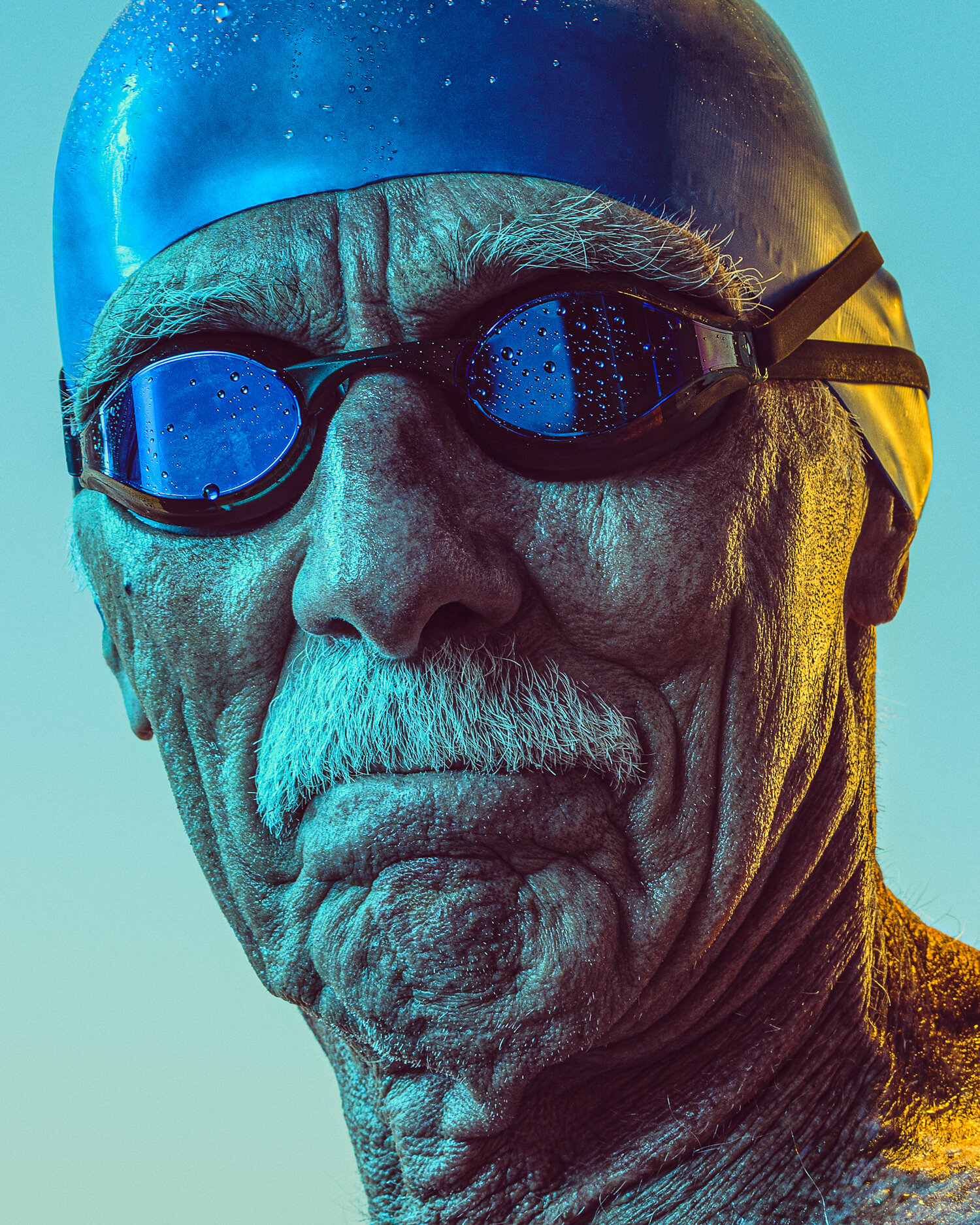
Portrait by Tim Tadder
If Tim Tadder’s work doesn’t draw you into the idea of photography as ART, I don’t know what will, because his visual appeal is inspiring and strong.
Tim hits the “stop-the-scroll” or “pay attention to this” criteria with every visual punch. And he offers a lot to study or at least think about for your photography adventures.
Interpretation Portraiture
Last, but certainly unlimited in his reach and genius interpretative abilities, Lee’s final example for this artistic study is Dan Winters - 1962, a widely-known for his work and yet somewhat elusive guy for story material; I guess he’s been too busy working!

But, Dan’s photographic footprint is highly acclaimed, well-recognized, and award-winning at every look. With the likes of Nike, Microsoft, IBM, LG, Hewlett-Packard, Sony, Bose, Saturn, Sega, Fila, Cobra, ABC, Warner Brothers, Paramount, DreamWorks, Columbia TriStar, and Twentieth Century Fox chasing down his work, and regulars in music including RCA, A&M, Sony BMG, Interscope, Warner, Elektra Records and Epitaph, all wanting him. Well. I’m sure I can just let his work speak for itself.

Motorcycle by Dan Winters
Or, visit Dan Winters’ website to further examine, explore, and review his massive collections of images and feel the awe of it all and learn more about him.
You can sense his original roots as a photojournalist woven throughout the viewpoints he expresses through much of his work. It’s also evident in the story expression in some of Dan’s ad campaign pieces, as well.

Al Pacino by Dan Winters
My spidey sense tells me Lee is drawn to this particular photographer for the simple complexity he delivers with portraitures largely shot in black and white or with muted colors. Still, Dan’s portraits of celebrities and others offer an abundance of story and understated detail. I also notice his work is a great study of lighting and how he uses it to play into the tale is compelling and intriguing.

Will Farrell by Dan Winters
In addition to what’s been called his “unusual” portrait photography, Dan’s known for his scientific photography, photo illustrations, drawings, and photojournalistic stories. Besides these works being published every which where Dan was also honored in 2003 by Kodak as a photo “Icon” in their biographical “Legends” series.

Wynton Marsalis by Dan Winters
Lean Into Legendary
I have a feeling Annie Leibovitz never dreamed she was going to be named a “Living Legend” by The Library of Congress when she brought her first black and white prints to Rolling Stone Magazine all those years ago.
I wonder if she aspired to work with Disney or The American Ballet Theatre, or if she ever expected to meet so many fascinating and well-known people? Did she imagine she, through her camera’s lens, would BE one of those well-known persons? A celebrity in her own right?
Either way, Annie and all the photo artists Lee shares with this list, living or not, are legends, indeed. They represent history, culture, music, and social movements. They bring to life those who are bigger than life with their inside peeks and intimate portrayals. And they share stories, emotions, attitudes, and moods without uttering a single word. They document lives, progress, and sadness. They reveal the future and spotlight hope with fantasy and color. They allow you to imagine. Or remember. Or dream.



